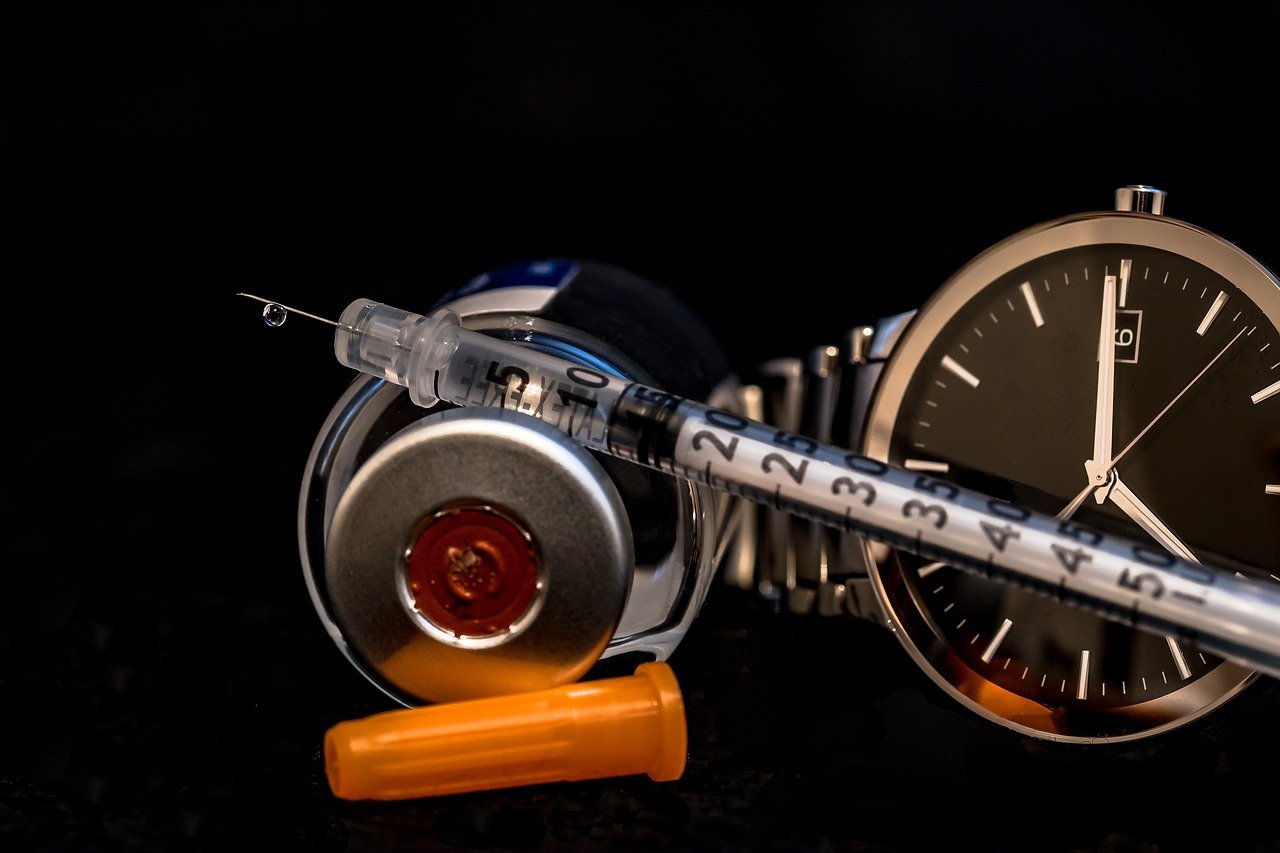A Look at Insulin Pump Therapy – Is it Right For You?
#ez-toc-container {
background: #f9f9f9;
border: 1px solid #aaa;
border-radius: 4px;
-webkit-box-shadow: 0 1px 1px rgba(0, 0, 0, .05);
box-shadow: 0 1px 1px rgba(0, 0, 0, .05);
display: table;
margin-bottom: 1em;
padding: 10px 20px 10px 10px;
position: relative;
width: auto;
}
.ez-toc-container-direction {
direction: ltr;
}
.ez-toc-list-level-1 a{
font-weight:bold;
}
Table of Contents
1. Understand the Basics of Insulin Pump Therapy
Outline 1: Understand the Basics of Insulin Pump Therapy
Introduction to Insulin Pump Therapy
Insulin pump therapy is a significant advancement in diabetes management. It offers a modern approach for people with diabetes to regulate their blood glucose levels more effectively. Unlike traditional methods of insulin administration involving multiple daily injections, insulin pumps provide a continuous and convenient method of insulin delivery. This form of therapy is particularly beneficial for individuals with Type 1 diabetes, although it can also be advantageous for some with Type 2 diabetes.
An insulin pump is a small, computerized device that mimics the way the human pancreas works by delivering small doses of insulin continuously (basal rate) and releases larger doses at meal times (bolus). This flexibility helps in maintaining better glucose control and aligns closely with the body’s actual insulin needs.
How Insulin Pumps Work
The mechanism of an insulin pump is designed to replace the need for multiple daily insulin injections, providing a more flexible and consistent insulin delivery system. Here’s how insulin pumps generally work:
- Continuous Insulin Delivery: Insulin pumps deliver a continuous, pre-programmed dose of rapid-acting insulin through a small catheter placed under the skin. This steady infusion of insulin helps maintain baseline insulin levels and control blood glucose throughout the day and night.
- Bolus Doses: At meal times or when blood sugar levels are higher than desired, the pump can deliver an extra dose of insulin, known as a bolus. Users can input the number of carbohydrates consumed and the pump calculates the necessary bolus dose to cover the food intake.
- Adjustable Rates: Insulin pumps allow users to set varying basal rates based on their specific daily needs and lifestyle activities, offering greater control over blood glucose management.
Types of Insulin Pumps Available
Technological advancements have led to the development of various types of insulin pumps, each offering unique features to accommodate different lifestyle needs. Here are the main types of insulin pumps available in the market:
- Traditional Insulin Pumps: These are the most common and resemble a pager or small cell phone. They have programmable settings for basal and bolus delivery, and the infusion site needs to be changed every few days.
- Tubeless or Patch Pumps: Patch pumps adhere directly to the skin and are controlled wirelessly. They eliminate the need for tubing, thus providing more freedom of movement and a discreet option for users.
- Closed-Loop Systems: Also known as artificial pancreas systems, these pumps combine continuous glucose monitor (CGM) data and insulin delivery, automatically adjusting insulin doses with minimal user input.
Benefits Over Traditional Insulin Injections
Insulin pump therapy offers a myriad of benefits over traditional insulin injection methods, making it a preferred choice for many individuals:
- Improved Glycemic Control: Insulin pumps provide precise dosing and better mimic the body’s natural insulin release, which can result in improved glycemic control and reduced risk of long-term complications.
- Greater Flexibility and Convenience: Pumps offer flexibility in lifestyle choices, such as irregular meal times and varying activity levels, while avoiding the inconvenience of multiple daily injections.
- Reduction in Hypoglycemic Events: By allowing more precise adjustments in insulin delivery, pumps can potentially reduce the frequency of hypoglycemic episodes.
- Enhanced Quality of Life: The discreet nature and adjustable settings of insulin pumps can lead to an enhanced quality of life, giving users more freedom to manage their diabetes without constant interruptions.
Insulin pump therapy represents a transformative option that empowers individuals with diabetes to take optimum control of their condition. By understanding the basics, types, and benefits of insulin pumps, users and healthcare providers can make informed decisions to improve health outcomes and lifestyle quality.

2. Assessing Your Eligibility for Insulin Pump Therapy
When considering insulin pump therapy as a diabetes management option, it’s crucial to assess your eligibility against several factors including medical conditions, age, lifestyle, and financial aspects. This comprehensive evaluation helps ensure that the therapy aligns with your health needs and lifestyle preferences, hence optimizing diabetes control. Here’s an in-depth look at assessing eligibility for insulin pump therapy.
Medical Conditions Suitable for Insulin Pump Use
Insulin pump therapy can be beneficial for certain medical conditions, providing enhanced diabetes management. Some of the key conditions where insulin pumps are considered suitable include:
- Type 1 Diabetes: People with Type 1 diabetes, who have an absolute insulin deficiency, often see significant benefits from insulin pumps as these devices allow for precise insulin delivery.
- Type 2 Diabetes: Although less common, individuals with Type 2 diabetes, especially those with irregular insulin needs, may also benefit from the controlled delivery of insulin pumps.
- Dawn Phenomenon: Patients who experience the “dawn phenomenon,” which causes blood sugar to spike in the early morning, can leverage the pump’s ability to adjust overnight insulin delivery.
- Gastrointestinal Absorption Issues: Individuals who face absorption issues can find the continuous subcutaneous insulin infusion (CSII) provided by insulin pumps more manageable.
Age Considerations and Lifestyle Factors
Age and lifestyle significantly influence the suitability and effectiveness of an insulin pump. Understanding these factors ensures the therapy integrates seamlessly into your daily life:
- Pediatric Use: Insulin pumps can be particularly useful for children as they offer a flexible tool to help manage their active and unpredictable schedules. Training and parental involvement are essential components of pediatric use.
- Adolescents and Young Adults: This group often benefits from the flexibility in lifestyle that pumps provide. Adjustments for sports, irregular eating, and school schedules become easier to handle.
- Adults with Active Lifestyles: For adults leading an active lifestyle, pumps provide great flexibility and allow precise adjustments according to activity levels, travel, and dietary changes.
- Elderly Patients: Older adults may also benefit from insulin pump therapy, though additional training and support may be required to overcome technological challenges.
Discussing with Healthcare Providers
Engaging your healthcare team in discussions about insulin pump therapy is vital to ensure an informed decision-making process:
- Evaluate Current Treatment: Discuss your current diabetes management routine and evaluate how insulin pump therapy might improve or enhance your treatment plan.
- Understand Benefits and Drawbacks: Have a candid discussion about the benefits and potential drawbacks of using an insulin pump, tailored to your unique medical history and lifestyle.
- Establish Goals: Collaboratively set realistic and personalized goals for what insulin pump therapy should achieve for your diabetes management.
- Review Technological Aspects: Gain a clear understanding of the technology involved and the necessary training or adjustments needed to integrate a pump into your life.
- Get Recommendations: Ask for recommendations on specific pump models or brands, considering their features and how they align with your needs.
Insurance and Cost Considerations
The financial aspect of insulin pump therapy can be significant, and understanding insurance and cost considerations is crucial:
- Insurance Coverage: Check with your healthcare provider and insurance plan regarding coverage for insulin pumps. Many insurance companies cover pumps under their durable medical equipment category, but specific terms can vary.
- Out-of-Pocket Costs: Consider possible out-of-pocket expenses, such as copayments, deductibles, and costs for consumables like infusion sets and cartridges.
- Financial Assistance Programs: Investigate potential financial assistance programs offered by pump manufacturers or third-party organizations to help alleviate some of the financial burdens.
- Long-term Savings: Factor in the potential long-term savings on health-related expenses by improved diabetes management and reduced complications as a result of using an insulin pump.
Understanding these critical factors that contribute to your eligibility for insulin pump therapy will empower you to make informed decisions alongside your healthcare provider. Optimal diabetes management not only helps stabilize your condition but also enhances your quality of life, allowing for a more active and flexible lifestyle.

3. Pros and Cons of Using an Insulin Pump
When considering the management of diabetes, insulin pumps have emerged as a pivotal technology offering numerous advantages and a few considerations. Understanding the pros and cons of using an insulin pump can help individuals make informed decisions about their diabetes management. In this article, we will explore the advantages of insulin pumps, including improved glycemic control, flexibility, and convenience, while also delving into the potential drawbacks such as device maintenance, cost, and skin issues. Furthermore, we will share user experiences and success stories, and discuss how individuals can weigh personal preferences and health needs in this decision.
Advantages of Using an Insulin Pump
Insulin pumps offer a range of benefits that can significantly enhance the quality of life for individuals with diabetes. Let’s examine some of the key advantages:
-
Improved Glycemic Control
One of the most compelling advantages of insulin pumps is the potential for improved glycemic control. These devices allow for precise delivery of insulin, tailored to individual needs. This precision enables tighter blood sugar management, reducing the frequency of hypoglycemic or hyperglycemic episodes. Many users report lower HbA1c levels, signaling better overall diabetes management.
-
Flexibility
Insulin pumps offer tremendous flexibility in daily routines. Unlike traditional insulin injections, pumps can easily adapt to varying schedules and activities. Users can adjust insulin delivery based on their meals, exercise, and stress levels with a few button presses. This adaptability is particularly beneficial for those with unpredictable routines or active lifestyles.
-
Convenience
The convenience provided by insulin pumps cannot be overstated. With features like continuous glucose monitoring integration and automated basal rate adjustments, these devices simplify diabetes management. The ease of administering bolus doses without the need for multiple daily injections is an immense relief for many users.
Potential Drawbacks of Insulin Pumps
While insulin pumps offer numerous benefits, there are potential drawbacks to consider:
-
Device Maintenance
Insulin pumps require regular maintenance and checks. Users must regularly change infusion sets, refill insulin reservoirs, and monitor battery levels. The learning curve associated with mastering the technology can be daunting initially, and the commitment to regular upkeep and troubleshooting is essential.
-
Cost
Cost is a significant factor for many when considering an insulin pump. These devices and their associated supplies can be expensive. Although many insurance plans cover insulin pumps, out-of-pocket costs can still be substantial. It’s crucial for potential users to factor in both initial expenses and ongoing supplies.
-
Skin Issues
Wearing an insulin pump can sometimes lead to skin issues. Users may experience irritation or allergic reactions at the infusion site. It’s important to properly care for the skin and site, rotating locations and using gentle adhesive products when possible, to mitigate these concerns.
User Experiences and Success Stories
Many individuals have embraced insulin pumps and experienced significant improvements in their diabetes management and quality of life. Here are a few user experiences that highlight the transformative impact of insulin pumps:
-
John’s Story:
John, a marathon runner, found his traditional insulin regimen limiting during races. Switching to an insulin pump allowed him to manage glucose levels efficiently without interrupting his training. With improved glucose control, John achieved his personal best marathon time, attributing his success to the flexibility offered by his insulin pump. -
Maria’s Experience:
Maria, a busy professional, struggled with managing her diabetes due to her erratic work schedule. Adopting an insulin pump helped her maintain steady blood sugars even during long, unpredictable workdays. She appreciates the ability to stealthily adjust insulin without drawing attention, a professional booster. -
Tim’s Transformation:
Diagnosed as a teenager, Tim faced continuous struggles with his diabetes management during college. Transitioning to an insulin pump improved his overall health, with better glycemic control contributing to fewer hospital visits and greater focus on his studies. Tim believes the technology helped him regain control and live a fulfilling life.
Weighing Personal Preferences and Health Needs
Choosing to use an insulin pump involves careful consideration of personal preferences and health needs. Here’s a guide to help you make a decision:
-
Consult with Healthcare Professionals:
A collaborative decision-making process with your endocrinologist or diabetes educator is crucial. They can guide you through the technical and medical considerations, ensuring the decision aligns with your unique health needs.
-
Consider Lifestyle Compatibility:
Think about your daily routines and lifestyle. Consider how an insulin pump might fit or enhance your day-to-day life. Whether you have an active lifestyle, fluctuating schedules, or specific dietary needs, an insulin pump may offer the stability and flexibility you require.
-
Evaluate Financial Implications:
Perform a detailed financial assessment, including insurance plan evaluations and potential out-of-pocket costs. Understanding the financial commitment can help in planning for long-term use.
-
Research and Reflect on Personal Experiences:
Learn from those who have made the switch to insulin pumps. User reviews, online forums, and in-person support groups can provide insights into what to expect and how to navigate common challenges.
In conclusion, while insulin pumps offer substantial advantages in diabetes management, their use requires a balance between convenience, cost, maintenance, and personal preferences. Weighing the pros and cons with a thorough understanding of your health needs can lead to a more informed and satisfying decision.
4. Getting Started with Insulin Pump Therapy
Insulin Pump Therapy: A Comprehensive Guide to Getting Started
Transitioning to insulin pump therapy can be an empowering step for individuals with diabetes, offering greater flexibility and control over managing blood glucose levels. This guide will walk you through the initial steps and training requirements, help you understand how to set basal and bolus rates, outline strategies for monitoring and adjusting your therapy, and provide resources for ongoing support.
Initial Steps and Training Requirements
Embarking on insulin pump therapy involves an educational process and a thorough understanding of the technology and its benefits. Here is an outline of the necessary steps:
-
Consult with Your Healthcare Team:
Your healthcare provider or endocrinologist will assess whether insulin pump therapy is suitable for you. They will consider factors such as your diabetes management history and lifestyle needs.
-
Choose the Right Insulin Pump:
Selecting the best insulin pump involves evaluating features, ease of use, and compatibility with your lifestyle. Work with your healthcare team to choose a device that meets your specific needs.
-
Comprehensive Training Session:
Prior to starting the therapy, you will undergo a detailed training session. This training will include instructions on using the pump, understanding its functions, and learning how to handle common troubleshooting scenarios.
Setting Basal and Bolus Rates
Correctly setting your basal and bolus rates is crucial for effective insulin pump therapy. Here are steps to determine these rates:
-
Understanding Basal Rates:
Basal insulin is the background insulin delivered continuously to manage blood glucose levels between meals and overnight. Work with your healthcare provider to establish an initial basal rate based on your body’s insulin needs.
-
Calculating Bolus Rates:
Bolus insulin is delivered in response to food intake or to correct high blood glucose. Begin by learning how to calculate bolus doses based on carbohydrate intake and pre-meal blood glucose targets.
-
Utilizing Technology for Precision:
Many insulin pumps come equipped with bolus calculators that use user-entered data to suggest optimal bolus doses. Familiarize yourself with this technology for more accurate insulin delivery.
Monitoring and Adjusting for Optimal Results
Once you’ve set your initial insulin rates, continuous monitoring and adjustments are necessary for optimal diabetes management.
-
Regular Blood Glucose Monitoring:
Consistent monitoring is vital to determine the effectiveness of your insulin therapy. Use data from glucose meters or continuous glucose monitors (CGMs) to assess your control.
-
Data Analysis:
Review your glucose data regularly to identify patterns or trends that might indicate the need for adjustment. Discuss these findings with your healthcare provider to make informed decisions.
-
Adjusting Insulin Settings:
Be prepared to adjust basal or bolus rates based on factors such as changes in your diet, activity level, or overall health. Consult with your healthcare team when making significant adjustments.
Ongoing Support and Resources
Successfully navigating insulin pump therapy involves utilizing available support and resources:
-
Access to Healthcare Professionals:
Maintain regular appointments with your healthcare provider to ensure your therapy remains effective. These sessions provide opportunities to make necessary adjustments and discuss any challenges.
-
Educational Materials:
Many insulin pump manufacturers offer comprehensive educational resources and user guides to enhance understanding and management skills.
-
Diabetes Support Communities:
Joining diabetes support groups, whether online or in-person, can provide emotional support and practical advice from individuals with similar experiences.
By understanding the initial steps, setting correct insulin rates, monitoring adjustments, and utilizing ongoing support, you can maximize the benefits of insulin pump therapy and achieve better diabetes management.





